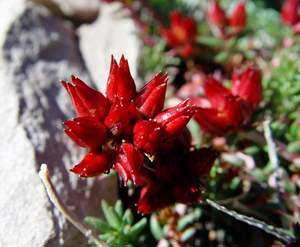Source: tibet.cn
09-05-2007 19:14
Tibetan people have relied on plants for staying healthy and treating illness for centuries. People's dependence on plants for medical interventions continues today. Medicinal herbs are being accepted and used increasingly by the general population as medicine or dietary supplements.
Hongjingtian, or rhodiola crenulata, for instance, has been used by the Tibetan people as a powerful revitalizer and medicinal agent since the beginning of Tibetan civilization.
 |
Known as "plateau ginseng," the plant grows on the Himalayas more than 4,500 meters above sea level under extremely adverse conditions, with dry air, insufficient oxygen, strong ultraviolet radiation and a huge day-and-night temperature variance. Its adaptability to its environment and its vitality are seldom found in any other plants.
Over 1,000 years ago, Tibetan people had been known to make the drink - by extracting rhodiola in water or wine -- to overcome fatigue from heavy physical labor and to boost energy levels so they could complete extraordinary physical tasks.
Pharmacological experiments and clinical research show that rhodiola is also an ideal herbal supplement for the modern world. The major agents in the plant are salidroside, tyrosot and volatile oil, as well as 35 biologically active trace elements and 18 amino acids needed by the human body.
Since it can improve endurance and mental capacity, including the memory, it is a superb tonic and energizer for those into physical fitness as well as for those stuck behind a desk or at a computer terminal for long periods of time. In addition, the plant now has been used by people with cardiovascular disease, pulmonary tuberculosis, pneumonia, tracheitis, lung congestion and coughs.
Editor:Liu Fang
